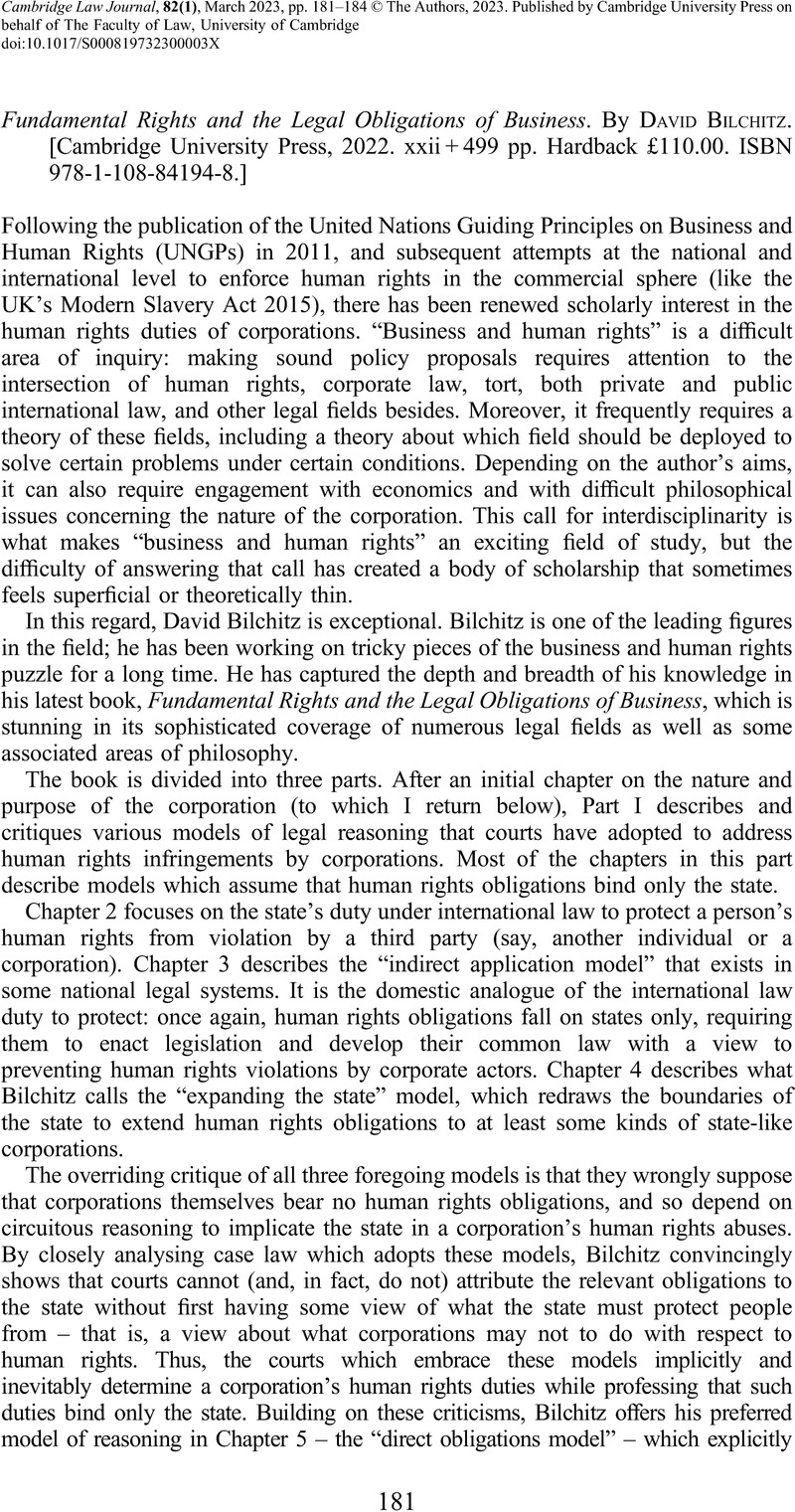No CrossRef data available.
Article contents
Fundamental Rights and the Legal Obligations of Business. By David Bilchitz. [Cambridge University Press, 2022. xxii + 499 pp. Hardback £110.00. ISBN 978-1-108-84194-8.]
Review products
Fundamental Rights and the Legal Obligations of Business. By David Bilchitz. [Cambridge University Press, 2022. xxii + 499 pp. Hardback £110.00. ISBN 978-1-108-84194-8.]
Published online by Cambridge University Press: 26 April 2023
Abstract
An abstract is not available for this content so a preview has been provided. Please use the Get access link above for information on how to access this content.

- Type
- Book Review
- Information
- Copyright
- Copyright © The Authors, 2023. Published by Cambridge University Press on behalf of The Faculty of Law, University of Cambridge


